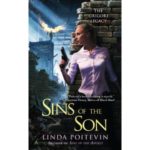All month long, the Fictorians have been posting articles on mixing several genres together to make a book more interesting or to entice a wider audience. Here are two outside-the-mainstream ideas for you to consider.
Erotic Genre Mixing
If you’re comfortable writing and marketing erotica, you should consider combining it with the different genres. There are plenty of straight-forward erotic encounters between all kinds of individuals to choose from in the eBook marketplace. There are, however, smaller niches where your mixing in different genres can bring in more readers.
This isn’t a new idea by far. Even in genres such as Westerns, there have been plenty of years-long ongoing series that featured plenty of explicit sex between the characters. A good example is the Jake Logan series based on a man named John Slocum. Considered an Adult Western, it had by formula three explicit sexual encounters per novel. The series was penned by multiple authors under the Jake Logan pseudonym, and it ran for over four hundred novels.
The idea of the adult-oriented genre novel is a relatively unexplored niche. Writing a Space Marine novel series? You could have the teams be chaste and virginal as they sling lead or energy beams around, or you can add in some adult interactions as one would expect in a more realistic lifestyle. Maybe the protagonist falls in love with an underground freedom fighter, only to discover they were a spy all along. The adult interactions between the characters will create a bond that is far more heartbreaking and emotional than if they were friendly acquaintances when the truth comes out.
If you decide to go this route, it is important that you indicate the adult content in the marketing material. Some people prefer have a sex-free reading experience, and if you have a surprise orgy halfway through the book, you might get hit by poor reviews.
Non-Fiction Blended with Genre Fiction
This is another under-represented area that is open for exploitation by a savvy author. The most common mix for this is known as Alternate History, where the author sets up actual historical events and adds in a “What If?” event that veers from what actually occurred.
For example, did you know that there was an actual Emperor of the United States? Emperor Norton I lived in San Francisco and declared himself the Emperor plus the Protector of Mexico in 1859. The citizens of San Francisco loved him and his “official” decrees, and many dignitaries stopped by to say hello. Now imagine writing a story where the United States government was overthrown and he was actually elevated to political power. How would life be different now?
You can combine plenty of ideas with different genres to create some unique combinations. One good example was an anthology edited by Fictorian Travis Heermann called Cthulhu Passant. This charity project combined Lovecraftian horror with the game of chess. Each story had both elements, and at the back of the anthology the editor appended a quick primer on chess moves and terminology.
If there is something you are proficient in, consider marrying it to one of the genres to create something new. William Gibson combined science fiction with marketing in his novel Pattern Recognition. The movie The Last Starfighter combined arcade-based video games and science fiction. Consider combining what you do for a day job or hobby and how it can be tossed into a blender to make a delicious Genre Frappé.


